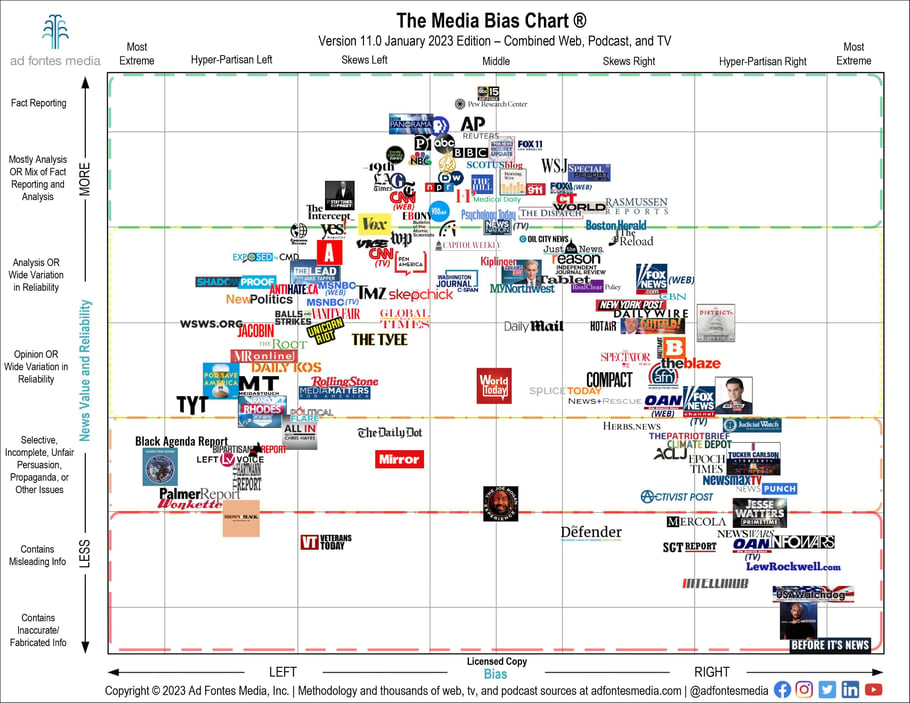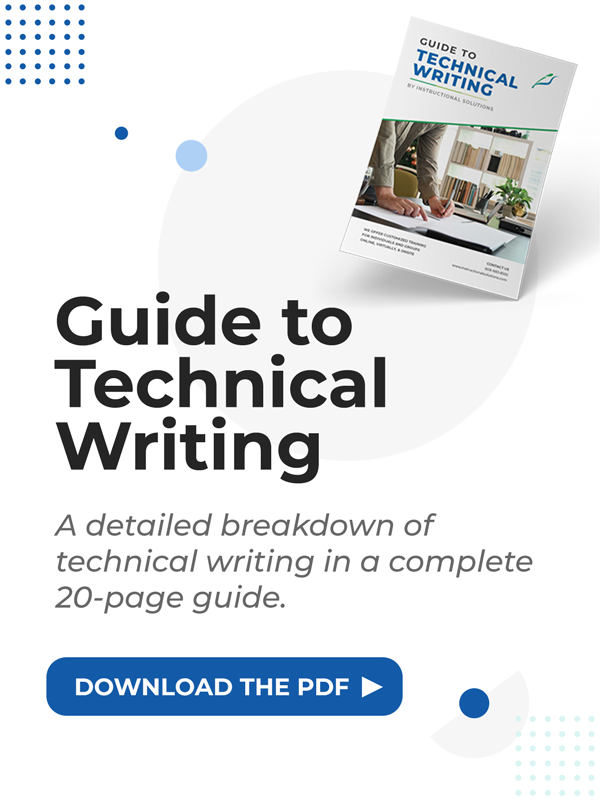Guide to Selecting Credible Sources for Business Writing

Originally published July 27, 2023, updated February 20, 2024

Table of Contents
In a world inundated with information at our fingertips, the need for discernment and critical thinking in writing has become more important than ever. Many types of business documents rely on online sources for information, including financial analytical reports, environmental infrastructure reports, government reports, industry projection documents, business proposals, and more. Primary sources and tertiary sources must be credible.
What is a credible resource?
As business writers navigating the vast digital landscape, where opinions can masquerade as facts, we must be able to discern credible sources from sketchy sources. Source discernment is no longer a skill applicable only to academic writing. Trustworthy sources, grounded in rigorous investigation and peer-reviewed scrutiny, are the trusted pillars of the information in effective business writing. It's the foundation for informed decision-making and ensures the integrity and reliability of the information business leaders rely upon – and report on.
What makes a resource credible?
Several factors contribute to the credibility of a resource:
- Authorship: The qualifications, credentials, and reputation of the author or the publishing entity play a crucial role. Experts with a track record in the field or well-established organizations lend more weight to the credibility of the information.
- Evidence-based Content: The source should be backed by relevant and robust evidence, whether it's data, research findings, or expert testimonies.
- Transparency: Reliable sources disclose their methodology, data sources, and potential conflicts of interest. They are clear about their objectives and the nature of the information they present.
- Peer Review: Resources that have undergone a peer-review process, where experts in the field evaluate the content for accuracy and quality, are generally deemed more reliable.
- Citations and References: A credible resource often cites its sources, enabling readers to trace the origin of the information and verify its accuracy.
- Publication Source: Information published by established academic institutions, research organizations, or renowned publishing houses often undergoes rigorous editorial scrutiny, adding to its credibility.
- Bias and Objectivity: While no source is entirely free from bias, credible resources aim for objectivity and balance, presenting multiple perspectives when relevant and avoiding sensationalism.
In this blog post, we will delve into why relying on credible research sources is vital, share the best media bias evaluative tool we trust, and explain how to vet industry publications to assess the quality of the information quickly. This will help you efficiently discern the value of your source material.
Business writing training provides the foundation to enhance these skills and ensure the integrity of our work in the ever-evolving information age.
Are peer-reviewed journal articles reliable?
Peer-reviewed journal articles are generally considered reliable sources of information in academic and professional contexts. The peer-review process involves experts in the subject area evaluating the article's content, methodology, and conclusions before it is published, ensuring that it meets the standards of the field. However, it's worth noting that while the process enhances the article's credibility, it doesn't guarantee its accuracy or quality. Errors, biases, or misinterpretations can still occur. Therefore, it's always advisable to use multiple sources when conducting research or drawing conclusions and to critically assess the content of peer-reviewed articles, considering the larger body of work on the subject.
Peer-reviewed journals offer both scholarly sources and academic sources. Non-credible sources are rarely cited in peer-review journals, but you must verify the source credibility of the types of sources. Deliberately biased peer reviews are published! Ensure that they are trustworthy, authoritative sources.
Navigating Credible Sources: An In-depth Look at the Ad Fontes Media Bias Chart
I highly recommend the Ad Fontes Media Bias Chart. Ad Fontes (Latin for to the source) is trustworthy, well-vetted, and continually updated. Their methodology for rating media sources is transparent. Ad Fontes will help you identify reliable sources and eliminate unreliable sources, especially credible news sources, internet sources, and reliable websites.

Created by Vanessa Otero, the Ad Fontes Media Bias Chart offers a comprehensive visual representation of various media outlets' political bias and reliability. The chart is divided into quadrants, with the vertical axis indicating the bias from left to right (liberal to conservative) and the horizontal axis representing the reliability of the sources from low to high. By examining the placement of media outlets on this chart, readers can quickly understand the publications’ potential bias and overall credibility.
It evaluates sources using “a rigorous, reproducible methodology – and a politically balanced team of analysts – to rate that content, both for bias and for reliability.” They describe that methodology here.
The Ad Fontes Media Bias Chart stands out for its thoroughness and meticulous analysis. Otero and her team extensively review and analyze news articles, television programs, and websites to determine their placement on the chart. This evaluation process considers multiple factors such as sourcing, political context, veracity, and journalistic standards.
Using the Ad Fontes Media Bias Chart to identify reputable sources empowers business writers to develop media literacy and critical thinking skills. Familiarity with the chart helps identify potential biases in sources. This enables diverse perspectives and encourages a discerning approach to information consumption. Additionally, the chart encourages readers to engage in a more nuanced understanding of media bias, moving beyond simplistic left-right dichotomies. By considering both reliability and bias, business writers can make more informed choices about the secondary sources they trust, ultimately contributing to a more balanced and well-rounded understanding of complex issues.
Caution #1: Unscrupulous sources have created photoshopped and AI-created dupes of the actual Ad Fontas chart.
Sketchy sources digitally alter the chart and place sources into a more credible quadrantSketchy sources are digitally altering the actual chart and placing sources into a more credible quadrant. Be certain you are viewing the actual, current Ad Fontes chart and not a fake. Again, critical thinking and discernment skills are essential in selecting credible sources, even with the guidance of the most respected media bias guide. You have to verify that the guide itself is real!
Caution #2: Be aware of your own information bias.
Everyone has information bias. Our own information bias, or confirmation bias, refers to our tendency to seek, interpret, and remember information in a way that confirms our preexisting beliefs or hypotheses while ignoring or dismissing contradictory evidence. In other words, it's the tendency to favor information that supports what we already believe and to ignore or downplay information that challenges our beliefs.
Confirmation bias occurs due to a combination of factors, including our desire for cognitive consistency, emotional attachment to our beliefs, and limited cognitive resources. Here's how it typically works:
- Selective Exposure: We tend to expose ourselves to information that aligns with our existing beliefs and opinions. For example, we may read articles, follow social media accounts, or interact with individuals who share our viewpoints. Doing so creates an information environment that reinforces our biases.
- Interpretation and Filtering: When we encounter new information, we often interpret it in a way that confirms what we already believe. We may selectively focus on certain aspects of the information while ignoring or discounting contradictory evidence. Our perception can be influenced by cognitive shortcuts, emotional factors, or personal experiences.
- Memory Bias: We are more likely to remember information that supports our beliefs while forgetting or distorting information that challenges them. This memory bias reinforces our existing biases over time.
- Seeking Confirmatory Evidence: We actively seek out information that confirms our beliefs while avoiding or dismissing information that contradicts them. This behavior is driven by our desire for cognitive consistency and the discomfort that arises from cognitive dissonance, which is the psychological tension we experience when holding conflicting beliefs.
- Group Polarization: When we engage in discussions or interact with like-minded individuals, group polarization can further reinforce our biases. In these situations, we tend to adopt more extreme versions of our initial beliefs due to the social validation and reinforcement we receive from others who share our views.
Overcoming confirmation bias requires conscious effort and critical thinking. It involves actively seeking out diverse perspectives, considering alternative explanations and evidence, being open to changing our beliefs when warranted, and being aware of our own cognitive biases. It’s hard! Professional writers must always approach report writing with curiosity, not pre-conceived ideas.
Conclusion
In a world flooded with information, business writers must continually cultivate discernment and critical thinking skills to extract valid information for business communication and business reports.
By relying on credible research sources, using tools like the Ad Fontes Media Bias Chart, and being aware of our biases, we can produce well-informed, reliable, and effective business writing that leaders like business executives can trust to inform decisions.
Do you want to strengthen your or your team’s business writing skills and develop the tools to navigate the complexities of information discernment effectively?
Invest in business writing training. Equip yourself or your team with the knowledge and expertise to produce high-quality, credible documents that drive informed decision-making.


